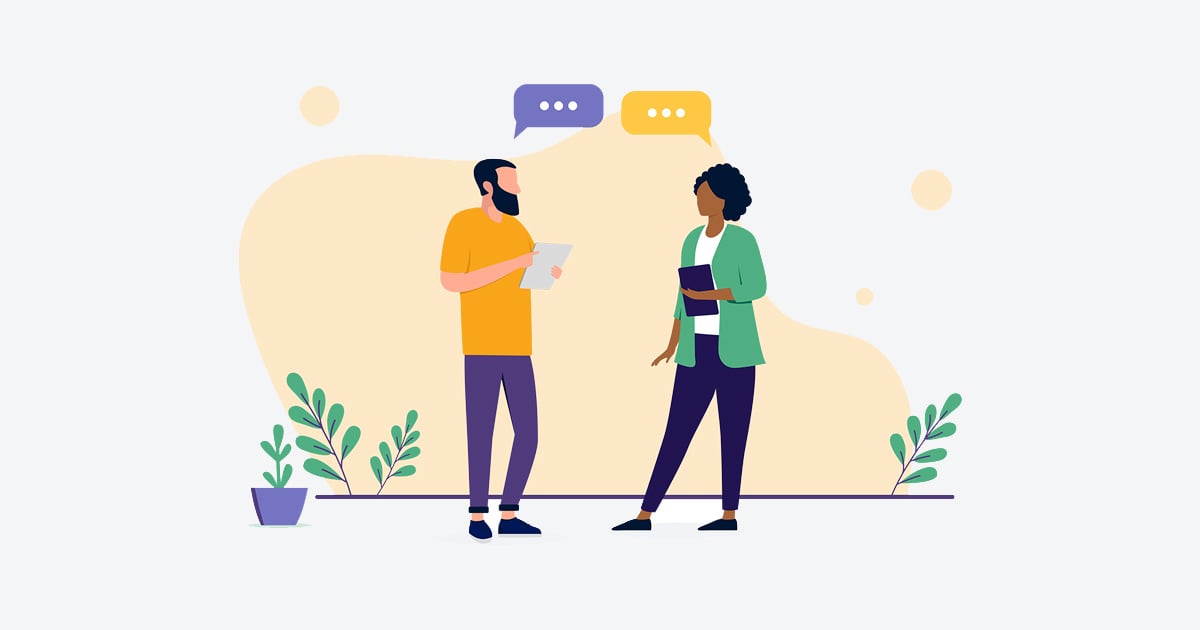
Originally published in 2019 on Mandel Communications' blog.
Is Anyone Listening?
I’m going to call it: listening is the single most important communication skill.
Why? Because nothing kills relationships or productivity faster than NOT listening.
Communication barriers, like poor active listening, cost the average organization a staggering $62.4 million a year.
Becoming a Good Active Listener
Good listening is not simply waiting quietly (yet impatiently) to reply while the other person talks. Instead, think of active listening as conducting a good conversation.
A good conversation is essentially a dialog between two people. It’s not a silent movie. It’s not a debate. It’s not a boxing match. And, it’s definitely not an interrogation.
That’s exactly why at Mandel we frame active listening skills as conversation skills. We focus specifically on how to build productive dialog with others, whether it’s your customers or your colleagues.
4 Steps to Building Productive Dialog
Our research and experience has enabled us to identify the essential flow of great conversations.
From that, we’ve designed a 4-step framework that we teach to help professionals improve their active listening skills and build positive dialog with others.
Step 1: Ask thought-provoking questions.
Never interrogate your listener or ask leading questions to get the response you think you want. Instead, ask open-ended questions that provide clarity and encourage the other person to share more with you.
Don’t waste valuable time with a stakeholder or customer gathering “just the facts.” Instead, explore perspectives, possibilities, and feelings.
Your questions should reflect that you care about helping the other person come to a new understanding of the situation or problem facing them.
Thought-provoking questions often start with phrases like:
- What do you think caused…
- Why do you think…
- How did you feel when…
- How would you feel if…
- What do you think about…
- What would you do if…
- What if you could…
- What if you had to…
These kinds of questions invite listeners to look at their situation from another point of view, to think about how different circumstances might alter their business or the choices they make, and to consider how the situation is impacting their feelings or personal aspirations.
These types of questions often allow the conversation to proceed in unexpectedly productive directions.
Step 2: While the other person is responding, give them your full attention.
Part of what sometimes makes it so hard to be present and give people your full attention is that people can actually think about four times faster than they can talk.
So while you’re listening to someone else talk, your brain is already working through how it wants to respond. That can make it very difficult to be open and present in the moment. It requires deliberate focus.
What can you do to not only improve your focus, but also show the other person that you’re paying attention?
- Make good eye contact.
- Keep your body language open.
- Clear away distractions, e.g., laptop, phone, coffee.
Not only will doing these things make it easier for you to focus, they convey respect and attentiveness to the other person.
Step 3: Show interest in what the other person has said.
First, acknowledge what the other person has said. This doesn’t mean nodding your head, saying uh-huh or “I understand.” It means reflecting back your understanding of their situation or perspective.
Acknowledgement often starts with phrases like:
- If I understand you correctly…
- Sounds like…
- You’re saying that…
Second, show interest in learning more or understanding better. Do this by asking a clarifying question or making a comment that builds on what the other person has said.
Sometimes, the toughest part of any conversation is how to transition or move the conversation forward. It’s easy to get stuck talking about problems or empathizing with your listener’s situation.
Ultimately, though, you have a goal in mind. It may be as simple as getting to the next conversation. Whatever it is, it’s important to master the skill of the transition. And linking is the key.
Step 4: Link your next question or comment to something you heard them say previously.
Transitions are all about summarizing what you’ve heard and then linking what you’ve heard to your next question or suggested next step.
What does that look like in action? Here are a couple of examples to help:
- Sounds like you’re interested in….We’ll talk a little about that when we cover the solution.
- You’ve said that….is really important to you. We don’t have anything prepared on that today, but we’d be happy to get back to you with more information. For now, is it OK if we continue talking about….?
As you know from your own experience, there’s a definite flow to great conversations. We’ve just broken it down into a framework that anyone can apply.
Ultimately, being a good listener is about demonstrating you care.
In a world of increasing distraction, and at a time when public discourse feels like it’s lacking in respect, there may be no more effective way to communicate you care — no more effective way to positively influence someone — than to give them your complete attention.
The older I get and the more experience I gain, the more convinced I am that the future belongs not to the boldest or the bravest or the fastest, but to those who listen well.
Be present. Stay focused. And really listen.
Learn More
Are you looking to build your team’s active listening and conversation skills? Learn more about Mandel’s Workshop: Communication Skills. You can see our full set of courses here.
Authors:

.png?width=512&height=130&name=vantage-logo(2).png)
